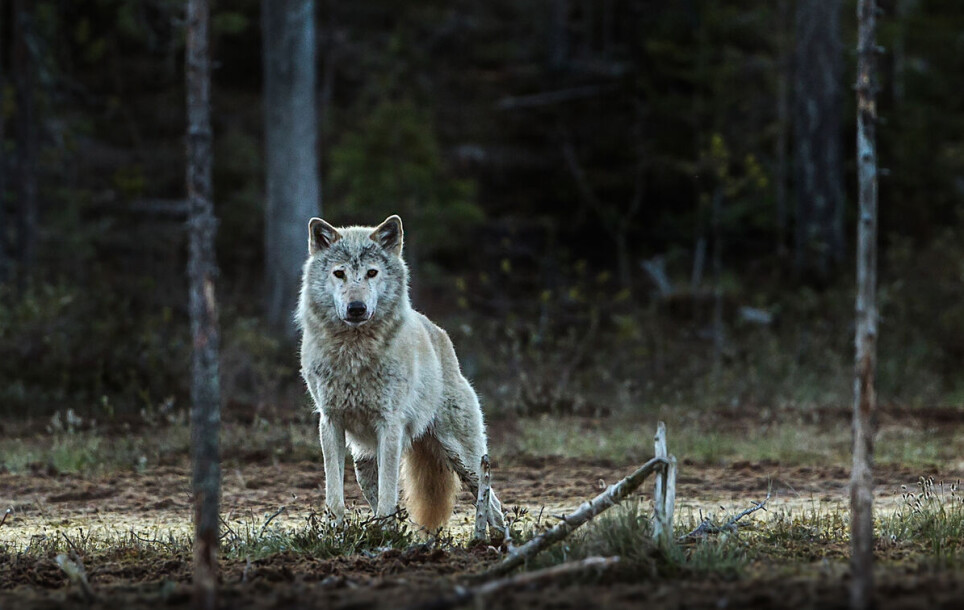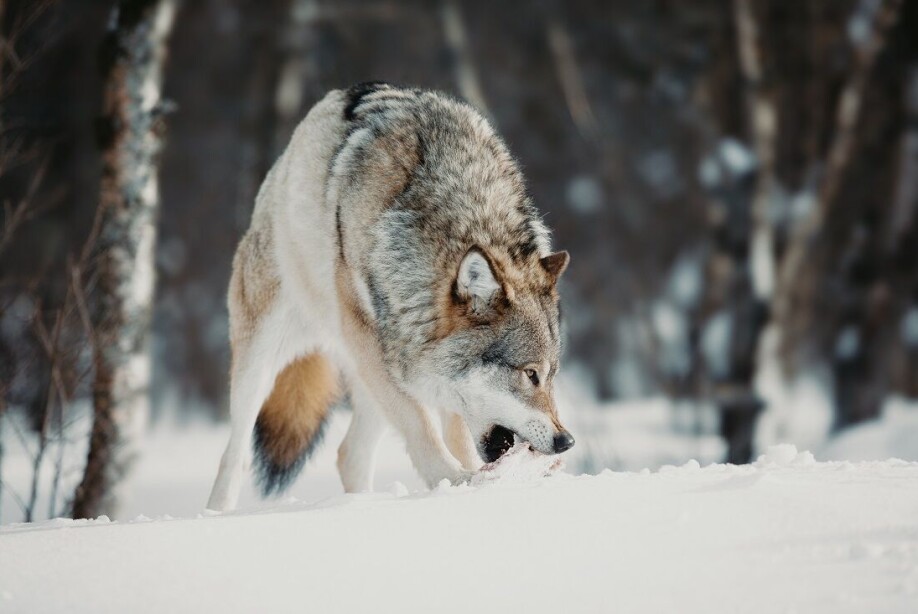THIS ARTICLE/PRESS RELEASE IS PAID FOR AND PRESENTED BY NTNU Norwegian University of Science and Technology - read more

The Norwegian wolf is extinct
The Norwegian wolf died out in the wild a long time ago. The wolves in Norwegian forests today are Finnish. Inbreeding is making them prone to extinction as well.
There’ s no longer any doubt — the wolves found in Norway and Sweden today are actually Finnish, according to extensive studies done on their genetic make-up. Humans wiped out Norway’s original wolf population in the wild around 1970.
“The original Norwegian-Swedish wolves probably didn’t share their genetics with the wolves in Norway and Sweden today,” says Hans Stenøien, director of the NTNU University Museum.
Stenøien is the first author of a new report that addresses the genetic composition of the Norwegian-Swedish wolf population in much greater detail than has been done previously.
“We’ve carried out the largest genetic study of wolves in the world,” says Stenøien.
This is the final part of a large report on the wolf in Norway that the Storting (Parliament) commissioned in 2016. But by then the real Norwegian-Swedish wolves had been gone for many years.

“Admittedly, some original Norwegian-Swedish wolves can still be found in zoos outside Norway. But our wolves today aren’t closely related to them,” Stenøien notes.
Disappeared and came back
The wolf came to Norway when the ice retreated about 12 000 years ago. But it disappeared from the Norwegian landscape, and probably from Sweden, by about 1970. High hunting pressure and conflicts with agriculture in particular contributed to the animals’ decline.
But apparently the species re-established itself around 1980. Today more than 400 wolves roam Norway and Sweden. They are regarded as a shared population.
Early on, there were rumours that wolves from zoos had been released into the Norwegian wild, but this does not appear to be true. In any case, they could not have been animals from Norway’s original wolf population. Instead, it seems that Finnish wolves expanded their territory.
“The wolves in Norway and Sweden today most likely come from wolves that migrated from Finland, says Professor Stenøien.
Where in Finland they came from is not entirely certain, but they nevertheless appear to be Finnish.
Wolves threatened by severe inbreeding
In a seemingly contradictory twist, the wolves in Norway and Sweden are genetically different from those living in Finland today. But this is neither good news nor a sign that Norway has a distinct wolf population.
“We haven’t found any indications of special or unique genetic adaptations in Norwegian-Swedish wolves,” Stenøien says.
Instead, the reason for the genetic differences is far less benign and is the result of the size of the wolf population, which is small and with a limited influx of new genes from other areas.
Inbreeding has meant that wolves in Norway and Sweden today have very little genetic variation, says Stenøien.
This probably means that the region’s wild wolves come from a very small number of Finnish animals. Genetic defects can thus more easily spread from one generation to the next. Unfavourable genes are not effectively weeded out by natural selection.
“This lack of variation makes wolves vulnerable to various diseases and hereditary conditions,” Stenøien explains.
There is a risk of having the wolf die out again in Norway – not just because of hunting this time, but because inbreeding makes the animals less resilient.
1300 wolves examined in detail
This is the second part of a report that the Storting commissioned five years ago, and is a detailed genetic study. The first part was a review of previous research and was delivered in 2017.
The work for this part of the report was led by NTNU and collaborating experts in genetics from the University of Copenhagen. The last author is Professor Tom Gilbert, who is associated with both institutions. Mike Martin, a professor who is also one of NTNU’s Onsager Research Fellows, has co-led the project. Researcher Xin Sun at the NTNU University Museum carried out most of the work. In addition, 34 researchers and institutions contributed sample material.
The research group originally had genetic samples from more than 1800 wolves around the world and especially from Europe. Around 500 of the samples were not in good enough shape to be used for various reasons, most often because the material was too old or degraded.
The researchers used approximately 1300 genetic samples as the basis for their conclusions. This time they compared all the genetic material – the genome – of the wolves, and not just parts of it.
The dataset represents the global genetic composition of wolves and dogs, according to the report.

No dog in Norwegian-Swedish wolves
In addition to the wolf samples, the research group included genetic samples from 56 different dog breeds to investigate whether any features of dogs were to be found in the Norwegian-Swedish wolf population. Dogs and wolves are so closely related that they can interbreed and have offspring together.
But the wolves in Norway and Sweden show scarcely any traces of dogs.
“The wolves in this country are among the ones that have the least amount of dog in the whole world, maybe even the very fewest dog traits,” says Stenøien.
Norway’s wolves might be both inbred and Finnish, but at least they’re real wolves.
Wolf management up to others
Stenøien doesn’t want to speculate about the consequences these genetic results should have for the management of the wolves in Norway or Sweden.
“It’s not our task to comment on anything other than the facts from this study,” he says.
Stenøien leaves that discussion to politicians and various interest groups. As is well known, the wolf issue in Norway is a hot-button issue and extremely divisive.
Norwegian-Swedish wolf probably gone forever
In theory, it is conceivable that the real Norwegian-Swedish wolves that are still found scattered around in zoos could contribute their genes to today’s wild wolves in Norway and Sweden.
This could both reduce inbreeding and reintroduce parts of the original genetic material to the wild wolf population on the Norwegian and Swedish border.
When asked directly, Stenøien concedes that bringing in zoo wolf genes “is probably possible, but it is certainly expensive, difficult and a lot of work.”
He won’t say anything about whether it would be worth the effort, work and money to do this, or whether using the resources to work on saving other parts of Norwegian nature would be a better option. There is no shortage of challenges.
In the context of the decades-long dissension that erupted when rumours circulated that wolves had been released into the wilds of Norway from zoos, it’s only natural to anticipate the resulting uproar if this were actually to happen.
The real Norwegian-Swedish wolf is probably gone from its native landscape forever.
Reference:
Hans K. Stenøien et.al.: Genetisk opphav til den norske-svenske ulvestammen (Canis lupus lupus) (Genetic origin of the Norwegian-Swedish wolf population). NTNU University Museum natural history report 2021-11.
———
Read the Norwegian version of this article at forskning.no
See more content from NTNU:
-
Social media is connected to cyberbullying – but not how we thought
-
Forskere ved NTNU får nesten 24 millioner av EU for å lage nye strømomformere
-
This helps the youngest children enjoy school more
-
Can we tap the ocean’s power to capture carbon?
-
Researchers have uncovered major problems in Norway's salmon industry
-
Why ChatGPT is bad at imitating people





































